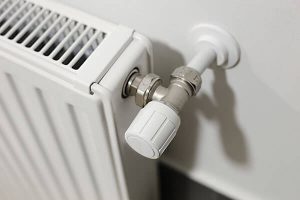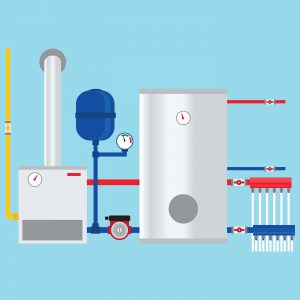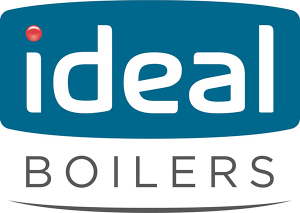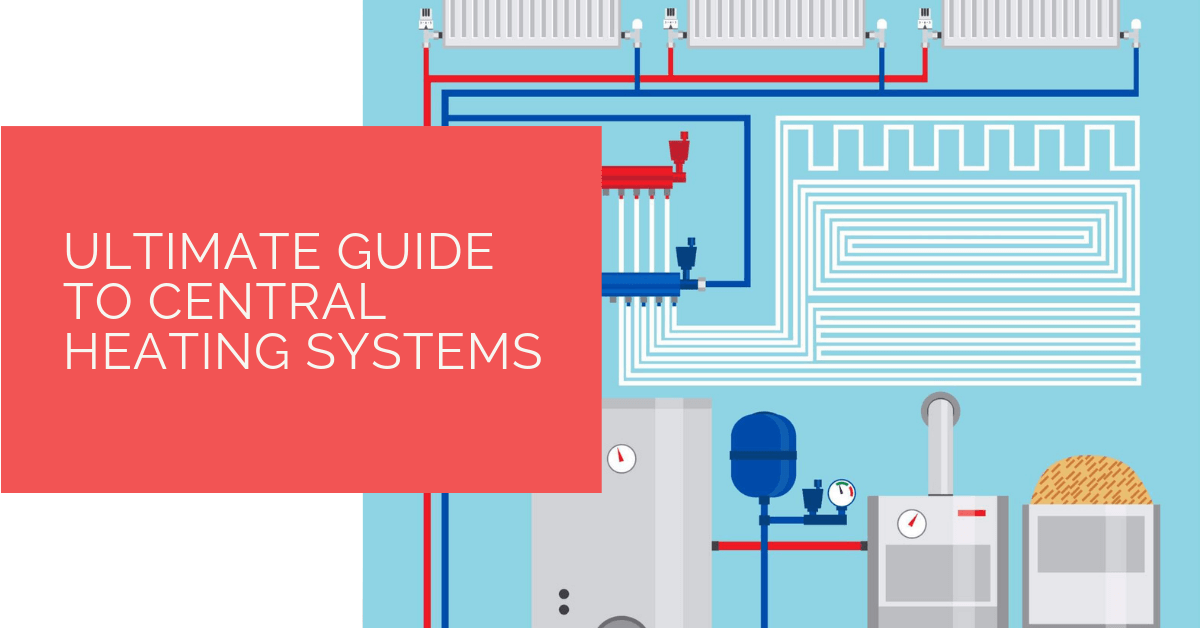Central heating systems are an integral part of our homes and place a crucial role in ensuring that there is a steady supply of heat and hot water to make life more comfortable. But with so many heating system options on the market, what are the different types available, and how do they work? In this guide, we will be discussing heating system types and everything you need to know about them.
Contents
- 1 Key Takeaways
- 2 Types of Heating Systems Available
- 3 Central Heating System Types
- 4 Gas Central Heating Systems
- 5 Electric Central Heating Systems
- 6 Which Option is Cheaper – Electric or Gas?
- 7 Can I Change Central Heating Types?
- 8 How Much Does Central Heating Cost?
- 9 What Is a District Heating System?
- 10 Tips On How to Maintain a Central Heating System
- 11 Boilers
- 12 Case Study: Upgrading to a Modern Central Heating System
- 13 Expert Insights About Central Heating Systems
- 14 Heat Pump Source: Reliable Heating and Cooling Solutions
- 15 Conclusion
Key Takeaways
- Central heating systems are essential for providing consistent home warmth, with various types available, including furnaces, boilers, and heat pumps.
- While gas central heating systems are initially more expensive to install than electric ones, they are more cost-effective in the long run due to lower running costs and faster heating capabilities.
- Boilers, central to many heating systems, come in different types like conventional, system, and combi boilers, with natural gas being the most common fuel source, followed by heating oil and LPG.
Types of Heating Systems Available
Central Heating
Furnaces
Most households depend on central boilers to heat their homes. These systems work by blowing heated air through a duct system, delivering warm air to different parts of a house through air grills or registers and are generally powered by natural gas, electricity, or fuel oil.
Boilers
Boilers are, in essence, special-purpose water heaters. In general, all types of boilers use hot water to distribute heat as it travels through radiators and other heat dispersing devices in rooms throughout a house. Hot water heating systems are often referred to as hydronic systems and generally use heating oil or gas as fuel.
Heat Pumps
Heat pumps are essentially two-way air conditioners. When the days are hot, ACs move heat from the somewhat hot indoors to the relatively warmer outdoors. In winter, heat pumps reverse this trick. They scavenge heat from the colder outdoors with the help of electrical systems and discharge it inside the house. When it comes to heat pump systems, the two most common types are the air-source heat pump which uses outdoor air as the heat source during winter and the ground-source heat pump which get their heat from the ground where temperatures are a bit more constant throughout the year.

Direct Heat
Gas-Fired Space Heaters
Gas-fired space heaters are characterised by a relatively small heat output and a lack of ductwork. These heaters are best for warming single rooms and can be fired up using propane, gas or kerosene.
Unvented Gas-Fired Heaters
Just like the name suggests, unvented gas-powered heaters are heating systems without an exhaust vent. While they are highly-efficient when it comes to heating spaces, their lack of a vent raises various safety and health concerns.
Electric Space Heaters
Electric space heaters, on the other hand, are resistive heaters that convert the electrical current from a wall socket into heat – they use the same principle as a clothes iron or a toaster. While inexpensive to buy, they can be quite costly to operate.
Pellet and Wood-Burning Stoves
These heating systems typically use wood or pellets to heat a space and are a low-cost option considering that wood is way cheaper than electricity, gas or oil.
Fireplaces
Most fireplaces are part of a room’s decor and can be wood or gas powered. While conventional fireplaces provide some level of warmth, they aren’t very effective when it comes to heating a room since they have to draw air from the room into the fireplace for dilution and combustion to occur.
State of the Art Heating
Radiant Floor Heat
These are systems that distribute warm water through a network of under-the-floor tubes, warming the floor, which in turn keeps people warm.
Ductless, Multi-Split, Mini-Split
These are heat pumps that distribute energy throughout a home using refrigerant lines instead of air or water.
Combined Heat and Power
This heating option is still being studied, but the idea behind it involves using a small generator to meet the electric demands of a house and recovering superfluous heat to keep a home warm and make domestic hot water.
Central Heating System Types
1. Wet Central Heating System
These are the most common form of central heating and typically include a radiator, boiler or heat exchange. These systems are quite popular in the United Kingdom and are either powered by a combi boiler or conventional boiler (more on these two later.)
How Wet Systems Work
The boiler burns fuel to heat water which is then fed through a system of pipes located inside the walls of a home to a radiator. In some instances, a heat exchanger can be used in place of a boiler.
2. Warm Air Central Heating System
This heating system is more common in office and business blocks and can provide heated and cooled air. These heating systems were quite popular in homes a while back, but since they are a bit more expensive to run than wet systems, they aren’t so favoured right now.
How Warm Air Systems Work
Just like wet systems, heating starts with a boiler which heats the air but instead of distributing it through pipes to a radiator, it blows it directly into a room through vents or ducts.
3. Storage Heaters
Storage heaters are often used in conjunction with electricity-powered heating systems. These heaters accumulate heat and store it during the night – when it is cheaper – and release it during the day.
How Storage Heaters Work
Storage heaters are typically wired into a home and use off-peak electricity to charge extremely efficient bricks capable of holding considerable amounts of energy overnight. This heat is then slowly released back into the house throughout the day.
Gas Central Heating Systems
Gas central heating systems burn natural gas to create heat. Compared to other forms of fuel like petroleum, wood, and electricity, natural gas has far more benefits as it is more efficient, convenient, reliable and comfortable. The heat produced by a natural gas heating system feels a lot warmer than heat produced by a central heating system using either one of the other fuels. It is worth noting that air from a forced gas air system is about 120 to 140 degrees Fahrenheit while that of a petroleum or electricity central heating system ranges around 85-95 degrees Fahrenheit.
The are two common types of gas heating systems – forced air systems and water-based systems. Forced air systems use natural gas burners to heat the surrounding air. This system takes in cold air which is then directed to a heat exchanger where it is heated. The heated air is then pushed out by a fan or blower through a duct system to different parts of a house. Water-based systems, on the other hand, use gas boilers to heat homes. The system heats water, which is then distributed through pipes to radiators, baseboard units, or floor systems which heat the surrounding environment.

How Do Gas Heating Systems Work?
Water-based gas heating systems, which are the most common, are a continuous circuit of moving hot water from the system’s boiler through radiators and then back to the boiler to get heated. In practice, the system burns the gas which heats the boiler that in turn makes hot jets of water that play on a heat exchanger. An electric pump then pushes the hot water through the system which flows through the different radiators within a home. The system’s radiators release heat, causing the water to cool as it passes through the loop and heads back to the boiler to pick up more heat.
The Running Costs of Gas
The average UK home spends about £550 each year on central heating gas alone. Oil boilers, on the other hand, will set you back £700 a year to produce the same amount of heat while electric storage heaters will cost you about £900 a year on the lower Economy 7 tariff. As you can see, using gas to power your central heating is way cheaper and more efficient than almost all other fuel options.
The Pros of Owning a Gas Heating System
- Cost Savings. A gas heating system can cut your energy cost by up to 70 per cent, considering that natural gas is way cheaper than most heating fuels.
- Better Efficiency. Modern gas heating systems can be up to 98 per cent efficient. Since very little energy is lost, a gas-powered central heating system will help you save more on your energy bills.
- Environmentally-Friendly. Gas heating systems are more environmentally-friendly than most other options. Natural gas is a cleaner fuel and has a lesser effect on the environment compared to wood, oil, and electricity generated using fossil fuels.
The Cons of Owning a Gas Heating System
- Natural gas is highly combustible. If mishandled, a natural gas heating system could lead to fatal accidents.
- Heat loss. As water travels from the boiler to the radiators, some of the heat is lost through the pipes and the radiators. By the time the water reaches the last radiator, it is already cold.
- Gas prices continue to rise. And while gas is cheaper than electricity, it is still not that cheap.
Electric Central Heating Systems
The most effective electric central heating systems use night storage heaters to store heat in heat-retaining ceramic bricks at night when the rate is cheaper. The bricks then keep your home warm using the heat they have stored up inside them. Apart from storage heaters, there are also electric radiators that use electricity to heat homes and can be switched on or off whenever you want. However, it is not advisable that you work with radiators since they work with standard electricity tariffs – when used during peak hours, costs can mount up quickly.
The Pros of Owning an Electric Central Heating System
- Electric night storage heaters are way cheaper to set up than a gas central heating system since they do not require a flue or any pipework
- Unlike natural gas, mains electricity is widely available all across the UK
- Electric central heating systems have few moving parts and require minimal maintenance – they do not need annual servicing
Which Option is Cheaper – Electric or Gas?
While gas is cheaper than electricity, it is way more expensive to install a gas central heating system than it is to install an electric one. At the same time, it has a shorter lifespan compared to electric units and requires more maintenance. However, gas central heating systems heat homes much faster than electric ones and are way cheaper to run.
Since electric central heating systems don’t require vents, installation is cheaper and faster. They are easier to maintain than their gas-powered counterparts. However, it makes more sense to own one if you live in an area with a temperate climate. Gas furnaces have a higher lifetime cost considering that high electricity costs make electric heat costlier than gas heat. At the same time, they take time to power up the heating element before they can start warming a space, which means you have to wait a bit longer for you to feel the heat.
As you can tell mains gas is the way to go when it comes to heating your home. Despite a higher installation cost, you will spend less than what you would with an electric heating system (electricity is about 3X the price of gas per kilowatt hour.) At the same time, gas-powered furnaces heat homes faster and more evenly.

Can I Change Central Heating Types?
Ideally, you can change your central heating system and the fuel it requires to run at any time; however, if your system uses mains gas to run a wet system, then you are already heating your home cheaply and efficiently. If you are currently using an electric storage heater, it makes more sense to switch to a gas-powered wet system. While you will initially pay about £2,500 for the heating system, and a few more pounds for radiators, making the switch could cut your bill by half and save you about £570 a year. If you cannot connect to the national mains gas network, installing a wood-burning central heating unit could save you about £800 a year.
How Much Does Central Heating Cost?
If your house does not have central heating, you will need to pay for the pipework, radiators, the boiler, and labour costs. Prices vary depending on what you want installed – fancy ornate radiators or top-of-the-range underfloor heating will cost you more. Nevertheless, you should be ready to spend about £4,000 to have central heating installed for an average three-bedroom house.
What Is a District Heating System?
A district heating system is a system that uses biomass, natural gas or household waste to heat large housing estates. The system became quite popular after World War II and is currently used to heat about 220,000 homes in Nottingham, Pimlico and Sheffield. This heating system is increasingly becoming popular amongst London developments where zero carbon is mandatory.
How Does A District Heating System Work?
In district heating, centrally-located heat-producing plants pump heated supply water to customers where it’s used to heat floors or rooms and to generate hot water for domestic use. Domestic hot water is heated in heat exchangers where hot supply water transfers its heat to the water pouring out of a tap. For room heating, the hot supply water can be used directly. Alternatively, heat exchangers can also be used to transfer heat to internal circulations. After making its rounds, the supply water, which is already cold because of transferring its heat to room heating and hot water, then makes its way back to the central district heating plant.
Tips On How to Maintain a Central Heating System
For a central heating system to run smoothly and remain in good working form, maintenance is crucial. Here are several tips for you to consider.
- Check the radiator for cold patches regularly. If your radiator is cold at the top, you might need to bleed it out. Cold patches at the bottom of the unit are indicative of a sludge build-up and corrosion that needs immediate fixing.
- Check pressure. Your central heating system’s pressure should always be around one or two bars. If it is below or above this, consider repressurising the system following the unit’s manufacturer’s instructions.
- Check the pilot light. Your system’s pilot light should always glow blue. If it is orange or yellow, that means that the boiler’s gas-to-air ratio is wrong and there is too much air in the unit. This could lead to smoke or sootiness and, in some cases, a release of carbon monoxide, which is deadly.
- Make use of your central heating timers. Checking your heating timers will not only save your money by only heating your home when you want it warm but will also help ensure your central heating works as it should since a constantly-running boiler is more likely to break down.
Boilers
At the centre of almost every central heating system that uses water to heat a home is a boiler. Boilers are responsible for burning fuels, which in turn heat the water that circulates the system. There are several types of boilers and here is a look at some of the main one:
Main Types of Boilers
Conventional Boilers
Conventional boilers, also known as standard, heat-only or regular boilers, are the most traditional form of heating in the United Kingdom. This type of boiler uses cold and hot water storage tanks that are typically installed in a home’s loft. The boiler is then plugged into your home’s main water supply line.
System Boilers
System boilers, also known as mains pressure boilers, are boilers with several components like a pressure valve and an expansion vessel included in the system to protect the entire system from excess water pressure.
Combi Boilers
Combination boilers are systems that are capable of providing hot water as well as heating. The system heats cold water from the mains and instantly delivers hot water. As a result, hot and cold water storage tanks are not needed for the system to work.

What Is the Difference Between Conventional Boilers and Combi Boilers?
The main difference between combi boilers and conventional boilers is that combi boilers deliver hot water instantly. They do not require storage tanks – as is the case with conventional boilers – and only heat water when it is demanded. Since there is no need for storage tanks, the combi system leaves you more space. Instantly heating water is more efficient than storing it in a storage tank. However, hot water flow tends to be slower with instant heating than when it’s coming from a cylinder.
Top Boiler Brands
Viessmann

Viessmann boilers are made by the Viessmann Group, a German-based manufacturer of industrial, refrigeration, and heating systems. The company is headquartered in Allendorf and was founded in 1917.
Grant

Grant is a UK-based award-winning boilers manufacturer known for designing and manufacturing reliable, quality and innovative products for the renewables and heating industry and has been doing so for over four decades now.
Worcester Bosch

Worcester Bosch is a UK-based hot water and heating products manufacturer based headquartered in Worcester. The company’s main products include heat pumps, boilers and solar panels.
Vaillant

The Vaillant Group is a German-based company that develops products for cooling, heating and hot water. The company, founded in 1874, is based in Remscheid and employs over 13,000 people all around the world.
Ideal

Ideal Standard International is a Belgium-based, privately-held international sanitary water, bathroom and plumbing fixtures company. The company was founded in 1901 and mainly manufacturers boilers, cylinders and heating system controls.
Baxi

Baxi is a subsidiary of BDR Thermea, one of Europe’s largest manufacturer and distributor of commercial and domestic space and water heating systems. The company was founded in 1866 by Richard Baxendale and is headquartered in the UK.
Glow Worm

Established in 1934, Glow Worm has been producing heating and energy products for eight decades now and consider themselves the pioneers of heating solutions in the United Kingdom. The company was, however, bought by the Valliant Group in 2001 but continues to produce innovative air conditioning and ventilation products under the Glow Worm brand.
What type of fuel is used to run boilers?
Natural gas is the most common fuel used in boilers, followed by heating oil, and LPG (Liquid Petroleum Gas). There are also boilers that burn biomass (wood chips) or coal (coal pellets) and others that use electricity to create heat. New oil and gas boilers have to be 90 per cent efficient or higher and typically employ condensing technology to attain this.
Here is a list of some of the common types of fuel used to run boilers:
- Biomass fuel
- Natural gas
- Liquefied Petroleum Gas
- Solid mineral fuel
- Electricity
- Oil type C2
- Oil type D
How Much Does a New Boiler Installation Cost?
Boiler installation is a very labour-intensive and technical endeavour. With safety measures and regulations, you will most likely have to find heating systems expert to handle the task for you.
Heating companies calculate their installation costs differently with pricing being determined by your heating needs and the specifics of your home. For instance, the parts you want to have installed will play a significant role in determining the cost of installation. The scope of the work will also play a crucial role in determining cost since larger boilers, and their corresponding parts will often call for higher prices. But what will it cost you to have a boiler installed?
Generally, the average cost of having a new combi boiler system installed is about £2,980 while a new heat-only boiler installation will cost you about £2,150.
Case Study: Upgrading to a Modern Central Heating System
Background
At Heat Pump Source, we often encounter homeowners looking to upgrade their outdated heating systems to more efficient and cost-effective solutions. This case study explores a recent project where we upgraded an old gas boiler system to a modern, energy-efficient central heating system, highlighting the process and benefits achieved.
Project Overview
The project involved a detached family home in the UK with an old gas boiler that was inefficient and expensive to run. The homeowners experienced inconsistent heating and high energy bills. They sought our expertise to install a new central heating system that would offer better performance, lower costs, and environmental benefits.
Implementation
Assessment and Planning
- Initial Consultation: Our team conducted a thorough assessment of the property, including energy usage, existing system layout, and the specific heating needs of the family.
- System Recommendation: Based on the assessment, we recommended a modern combi boiler system. This option was chosen for its efficiency, compact size, and ability to provide both heating and hot water on demand without the need for a separate water tank.
Installation Process
- Removal of Old System: We safely removed the old boiler and associated components. This step involved careful planning to minimize disruption to the household.
- Installation of Combi Boiler: The new combi boiler was installed in a central location to ensure optimal performance and accessibility. We used the latest piping techniques to ensure efficient water flow and minimal heat loss.
- System Integration: The new system was integrated with existing radiators and thermostats, with necessary upgrades to ensure compatibility and efficiency.
Quality Assurance and Testing
- After installation, we conducted a series of tests to ensure the system was operating at peak efficiency. This included checking the boiler’s performance, water pressure, and thermostat accuracy.
- We provided the homeowners with a detailed tutorial on using the new system, including how to set the thermostat and schedule heating times for optimal energy savings.
Results
- Enhanced Efficiency: The new combi boiler significantly improved the home’s heating efficiency, providing consistent warmth and reliable hot water. The system’s efficiency rating was 95%, a substantial improvement over the previous system.
- Cost Savings: The homeowners reported a noticeable reduction in their monthly energy bills. The new system’s efficiency and the use of a smart thermostat allowed for better control over heating schedules, further reducing costs.
- Environmental Impact: By upgrading to a modern, energy-efficient system, the household reduced its carbon footprint. The new boiler’s cleaner fuel combustion process resulted in lower CO2 emissions, contributing to a more environmentally-friendly home.
Summary
The upgrade to a modern central heating system not only enhanced the home’s comfort but also delivered significant cost savings and environmental benefits. At Heat Pump Source, we are committed to providing tailored solutions that meet the unique needs of each household. This project exemplifies our approach to integrating advanced heating technologies that offer both efficiency and reliability. With regular maintenance and smart usage, the homeowners can enjoy the benefits of their new system for years to come.
Expert Insights About Central Heating Systems
Choosing the right central heating system is crucial for both comfort and efficiency. Whether it’s a traditional gas system or the latest heat pump technology, the key is understanding your home’s specific needs and energy consumption patterns.
Senior Heating Specialist
The advancement in boiler technologies, such as combi and system boilers, offers homeowners more efficient and space-saving options. These systems not only provide consistent heating but also significantly reduce energy costs over time.
Lead HVAC Engineer
Regular maintenance of your central heating system ensures longevity and optimal performance. Even the best systems can underperform if not properly maintained, so it’s essential to schedule annual check-ups.
Maintenance Expert
Heat Pump Source: Reliable Heating and Cooling Solutions
At Heat Pump Source, we take pride in our unwavering commitment to serving the UK with top-tier HVAC solutions. From the efficiency of heat pumps and the cool relief of air conditioning to the warmth of boilers, radiators, and underfloor heating, our dedicated team is always at the forefront of innovation. We understand the unique needs of every household and business, and we strive to provide dependable health and cooling products and services that are tailored just for you. Ensuring your comfort and satisfaction is our utmost priority. Whether you have questions, need guidance, or require support, we’re always here to assist. Please don’t hesitate to contact us; we’re eager to be of service.
Conclusion
Understanding the diverse options available for central heating systems is crucial for homeowners seeking comfort and efficiency. From gas-powered systems providing cost-effective warmth to the various types of boilers tailored to different needs, making informed choices can lead to substantial savings and a cozy living environment. Regular maintenance and consideration of factors like fuel type and installation costs are vital steps in ensuring the optimal performance of your central heating system. Ultimately, a well-chosen and well-maintained heating system can enhance the quality of life and contribute to a more comfortable and sustainable home.
About the Author
At Heat Pump Source, our articles are the product of a collaborative effort among a team of highly skilled HVAC experts. Our dedicated professionals, hailing from diverse backgrounds in heating, ventilation, air conditioning, and refrigeration, contribute their extensive knowledge and experience to every piece of content. This multidisciplinary approach ensures comprehensive coverage. Our commitment is to deliver authoritative, reliable, and tailored advice to meet the unique needs of every household and business across the UK.

